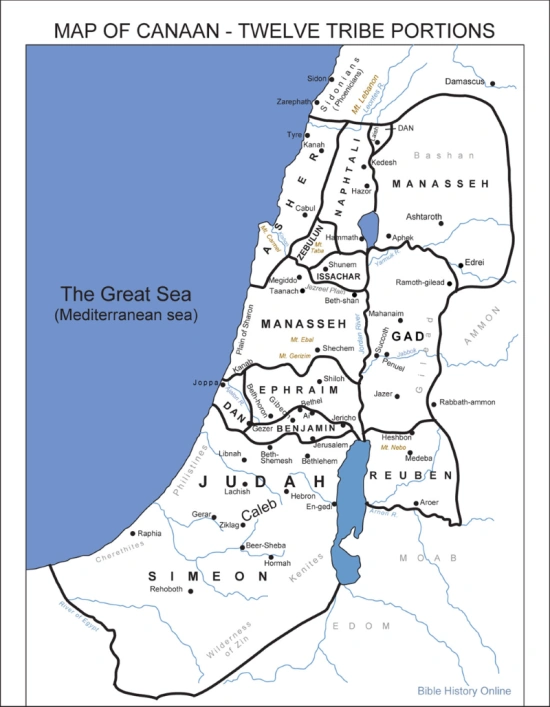
Joshua 16: The territories of Joseph’s sons, Ephraim and Manasseh.
Chapter 16 tells about the land given to the tribes of Ephraim and Manasseh, the two sons of Joseph. Only Ephraim’s territory is covered in this chapter; Manasseh’s territory is discussed in Joshua 17.
The first three verses describe Ephraim and Manasseh’s territories as one large area. Half of Manasseh had already been given land on the other side of the River Jordan, (see Joshua 13 for more). Together, Ephraim and (the second half of) Manasseh’s territory is in the center of the land west of the Jordan.
This seems to suggest that the spiritual meaning of those two tribes is of major importance for us. Ephraim, Joseph’s younger son, stands for our understanding of the Lord’s truths, while Manasseh, the older son, stands for the good which these truths lead us to do (see Swedenborg’s work, Arcana Caelestia 8399).
It is a spiritual truth that we need an understanding of what is true - in the Word, and about the Lord - before we can begin to do what is genuinely good. Yet it is good which is the most important thing in our spiritual life, so this is really the first in importance (see Swedenborg’s True Christian Religion 336[2]).
This ‘switch’ is reflected in Genesis chapter 48, when Joseph takes his two sons to his dying father, Israel, for him to bless them. But Israel (Jacob) blesses younger Ephraim first, and Manasseh second; he reverses the order of their birth. For us, it is important to see that both good and truth combined are essential, each for the sake of the other. The tribes’ central location in the Land of Canaan and adjoining territories illustrate this point.
Verse 9 brings out this unity even further. It says: “The separate cities for the children of Ephraim were among the inheritance of the children of Manasseh, all the cities with their villages.” Not only were the two territories adjacent, but they overlapped, with separate cities for Ephraim being among the territory of Manasseh. Truth and good are partnered in a kind of marriage together (read Swedenborg’s Doctrine of Life 33).
The last verse of this short chapter raises another interesting point, which has been mentioned previously: while Israel had conquered the land of Canaan, there were places where the people of Canaan still lived among the Israelites. Verse 10 states: “And they did not drive out the Canaanites who dwelt in Gezer; but the Canaanites dwell among the Ephraimites to this day and have become forced labourers.”
We came across a similar situation in Joshua 9 with the Gibeonites, who made a treaty with Israel but became woodcutters and watercarriers to serve Israel. The meaning for us is that the lower or more outward, natural things of life are there to serve our spiritual life. They are not to be destroyed, because natural life is the arena in which we live out the beliefs and values that form our spiritual life (True Christian Religion 339).
The Canaanites in Gezer, who were forced to work for the Ephraimites, represent our lower nature. It is still active in us at times, rising up, showing itself, but we realize that this takes place so that it works for our spiritual growth and regeneration (Arcana Caelestia 5947).







